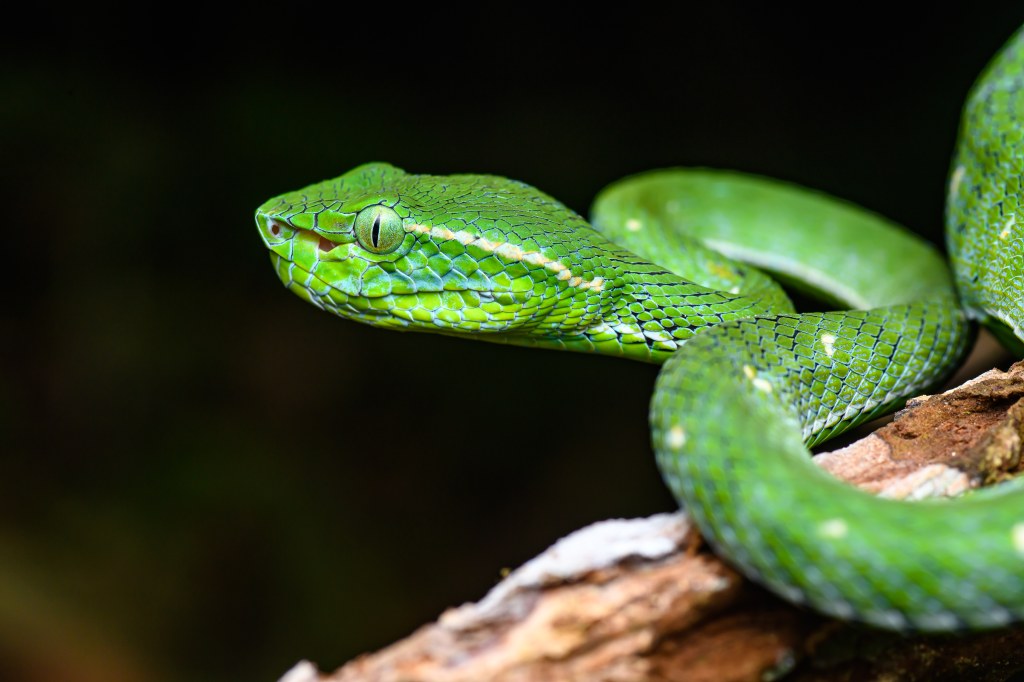Unveiling The Majestic Hagen’s Pit Viper: Discover Its Enchanting Beauty And Take Action Now!
Hagen’s Pit Viper: A Venomous Beauty of the Rainforest
An Introduction to Hagen’s Pit Viper
Greetings, Pit Walk Enthusiast! Today, we venture into the depths of the rainforest to discover the captivating world of Hagen’s Pit Viper. This venomous reptile, also known as the Hypnale hypnale, is native to the lush forests of Sri Lanka and southern India. With its unique appearance and intriguing behaviors, the Hagen’s Pit Viper has become a subject of fascination for herpetologists and nature enthusiasts alike.
Before we delve into the details, let’s take a moment to familiarize ourselves with this enigmatic creature. Hagen’s Pit Viper belongs to the family Viperidae, known for their venomous species. With a length of about 60 to 80 centimeters, it sports a stout body and a triangular-shaped head. Its coloration ranges from green to brown, providing excellent camouflage in its natural habitat.
2 Picture Gallery: Unveiling The Majestic Hagen’s Pit Viper: Discover Its Enchanting Beauty And Take Action Now!


🐍 Fun Fact: Did you know that Hagen’s Pit Viper possesses heat-sensing pits on its snout, allowing it to detect prey even in complete darkness?
What Makes Hagen’s Pit Viper Unique?
Let’s dive deeper into the fascinating aspects of this venomous beauty:
1. Venomous Bite

Image Source: thainationalparks.com
Hagen’s Pit Viper possesses venom that is both hemotoxic and cytotoxic. This potent combination targets the circulatory and tissue systems of its prey, ensuring a swift and efficient capture. However, it’s important to note that while the venom can be harmful to humans, its bites are rarely fatal.
2. Arboreal Lifestyle
Being an arboreal species, Hagen’s Pit Viper spends most of its life high up in the trees. Its prehensile tail and specialized scales on the underside of its belly aid in gripping branches, allowing it to move with remarkable agility through the dense rainforest foliage.
3. Unique Defensive Display
When threatened, Hagen’s Pit Viper showcases its distinctive defensive posture. It coils its body and exposes its bright, yellow-green underside, known as the flash coloration. This sudden display serves as a warning sign to potential predators, indicating its venomous nature.
4. Diet and Feeding Habits
Hagen’s Pit Viper primarily feeds on small mammals, birds, and lizards. It employs an ambush hunting technique, patiently waiting for unsuspecting prey to pass by before striking with lightning speed. Its venom quickly immobilizes the prey, allowing the pit viper to consume its meal at leisure.
5. Mating and Reproduction

Image Source: wikimedia.org
During the breeding season, male Hagen’s Pit Vipers engage in combat for the attention of females. This ritual involves intertwining their bodies and pushing against each other, often resulting in an intense show of strength. After successful mating, the female gives birth to live young, usually numbering between 5 and 20 offspring.
6. Conservation Status
Due to habitat loss, illegal pet trade, and persecution by humans, the population of Hagen’s Pit Viper is under threat. Organizations and conservationists are working tirelessly to protect its natural habitat and raise awareness about the importance of preserving this unique species.
The Pros and Cons of Hagen’s Pit Viper
As with any creature, Hagen’s Pit Viper has its advantages and disadvantages:
1. Pros
✅ Natural pest control by preying on rodents and other small animals
✅ Unique and beautiful appearance, making it a subject of fascination for nature enthusiasts
✅ Plays a crucial role in maintaining the delicate balance of the rainforest ecosystem
2. Cons
❌ Venomous nature poses a potential threat to humans if encountered
❌ Vulnerable to habitat destruction and illegal pet trade
❌ Misunderstood and often persecuted due to fear and lack of awareness
Frequently Asked Questions
1. Can Hagen’s Pit Viper be kept as a pet?
No, it is illegal to keep Hagen’s Pit Viper as a pet in most countries due to its venomous nature and conservation concerns.
2. Are Hagen’s Pit Vipers aggressive towards humans?
Hagen’s Pit Vipers are generally not aggressive towards humans unless provoked. It’s best to avoid any interaction with them in their natural habitat.
3. How long does the venom of Hagen’s Pit Viper take to take effect?
The venom’s effects can vary depending on the individual and the location of the bite. Generally, symptoms may appear within a few hours, but immediate medical attention is necessary if bitten.
4. Are there any anti-venom treatments available for Hagen’s Pit Viper bites?
Yes, there are specific anti-venom treatments available for Hagen’s Pit Viper bites. Prompt medical intervention is crucial for a successful recovery.
5. How can we contribute to the conservation of Hagen’s Pit Viper?
We can contribute to the conservation of Hagen’s Pit Viper by supporting organizations dedicated to preserving their natural habitat, spreading awareness about their importance, and avoiding the illegal wildlife trade.
A Call to Action
Now that you’ve learned about the captivating world of Hagen’s Pit Viper, why not take action to protect these incredible creatures? Join hands with conservation organizations, educate others about the importance of preserving their habitat, and let your voice be heard!
Final Remarks
In conclusion, Hagen’s Pit Viper is a mesmerizing reptile that adds to the biodiversity of our planet’s rainforests. However, it is crucial to appreciate them from a safe distance and respect their habitat. Let us strive to coexist harmoniously with these venomous beauties and ensure their survival for generations to come.
This post topic: Pit

